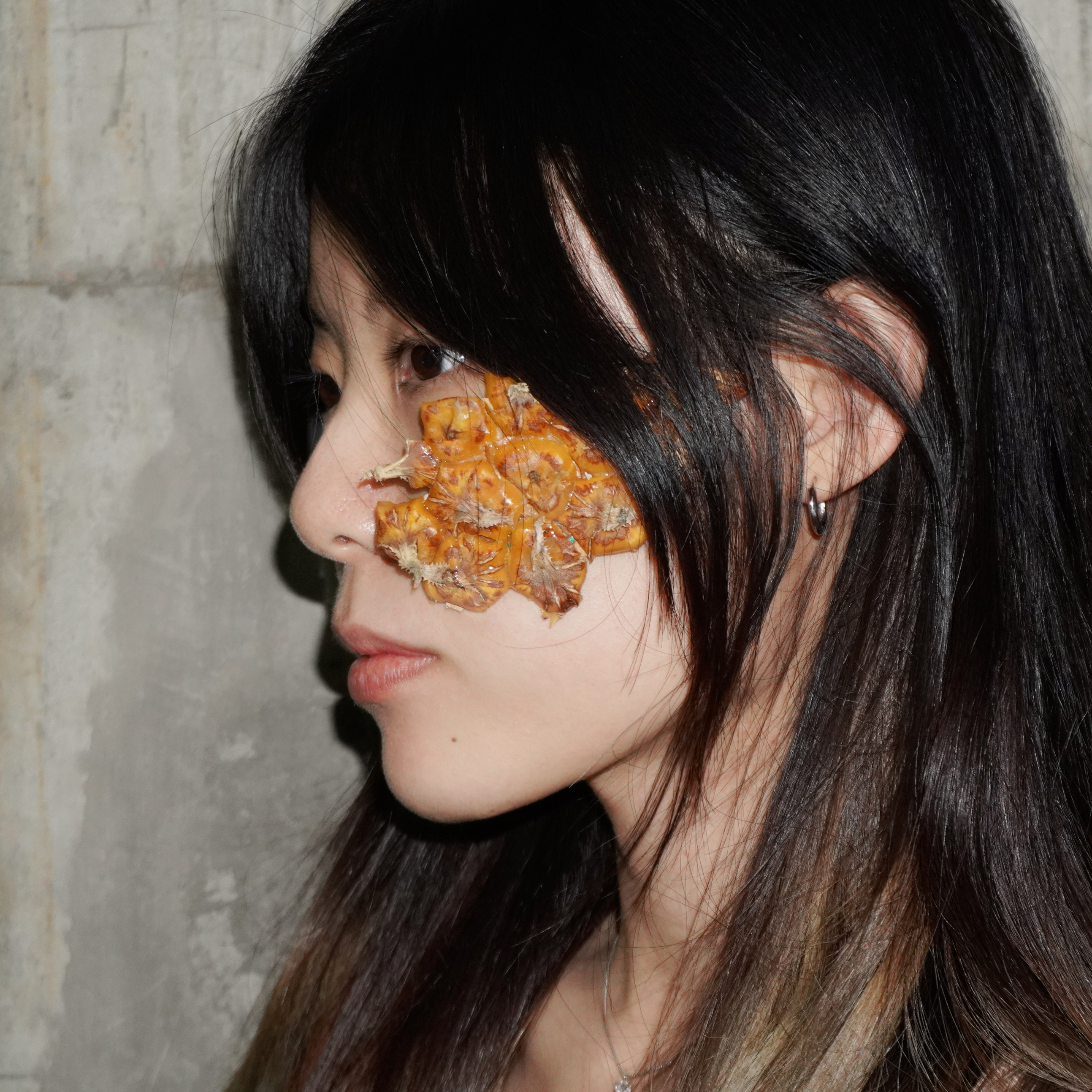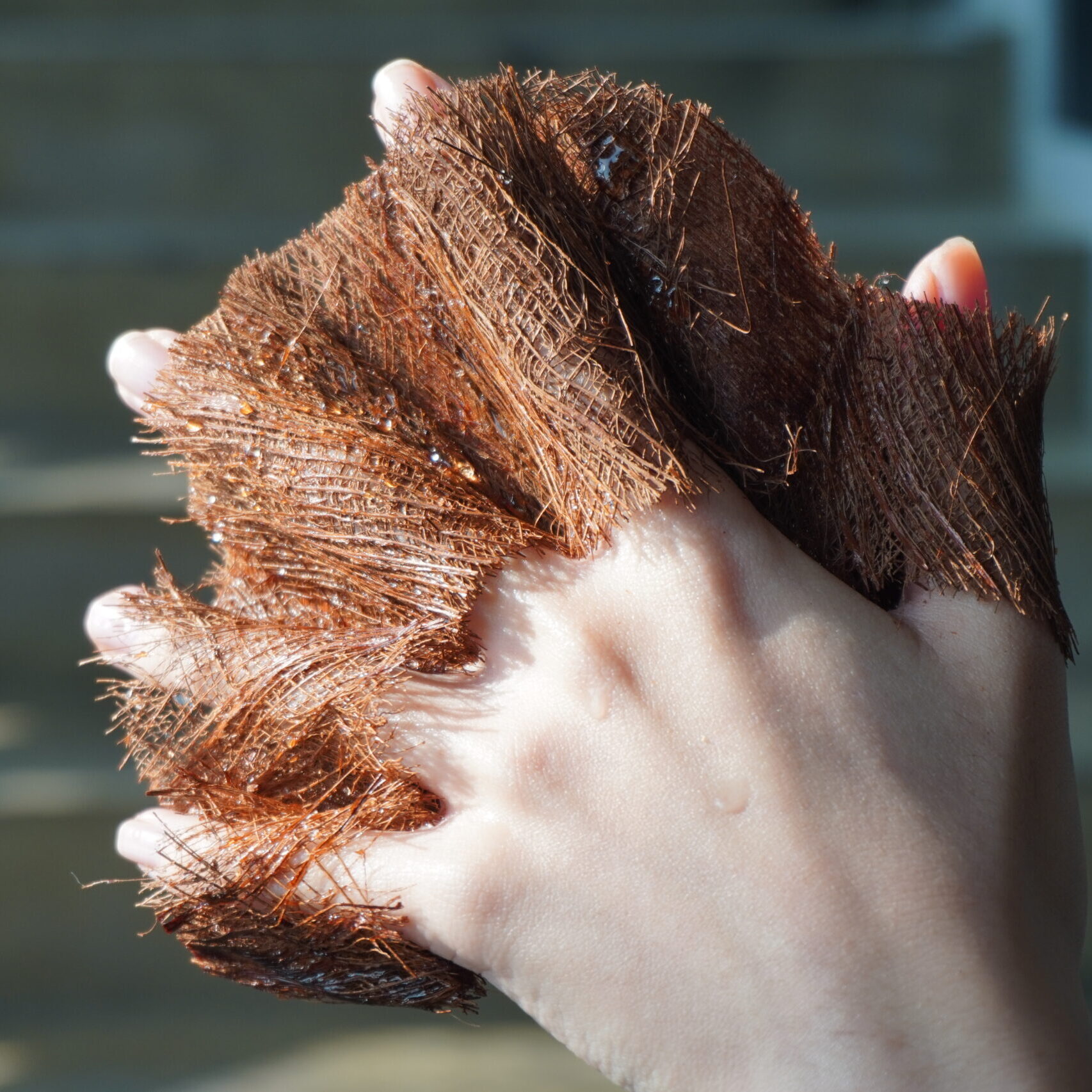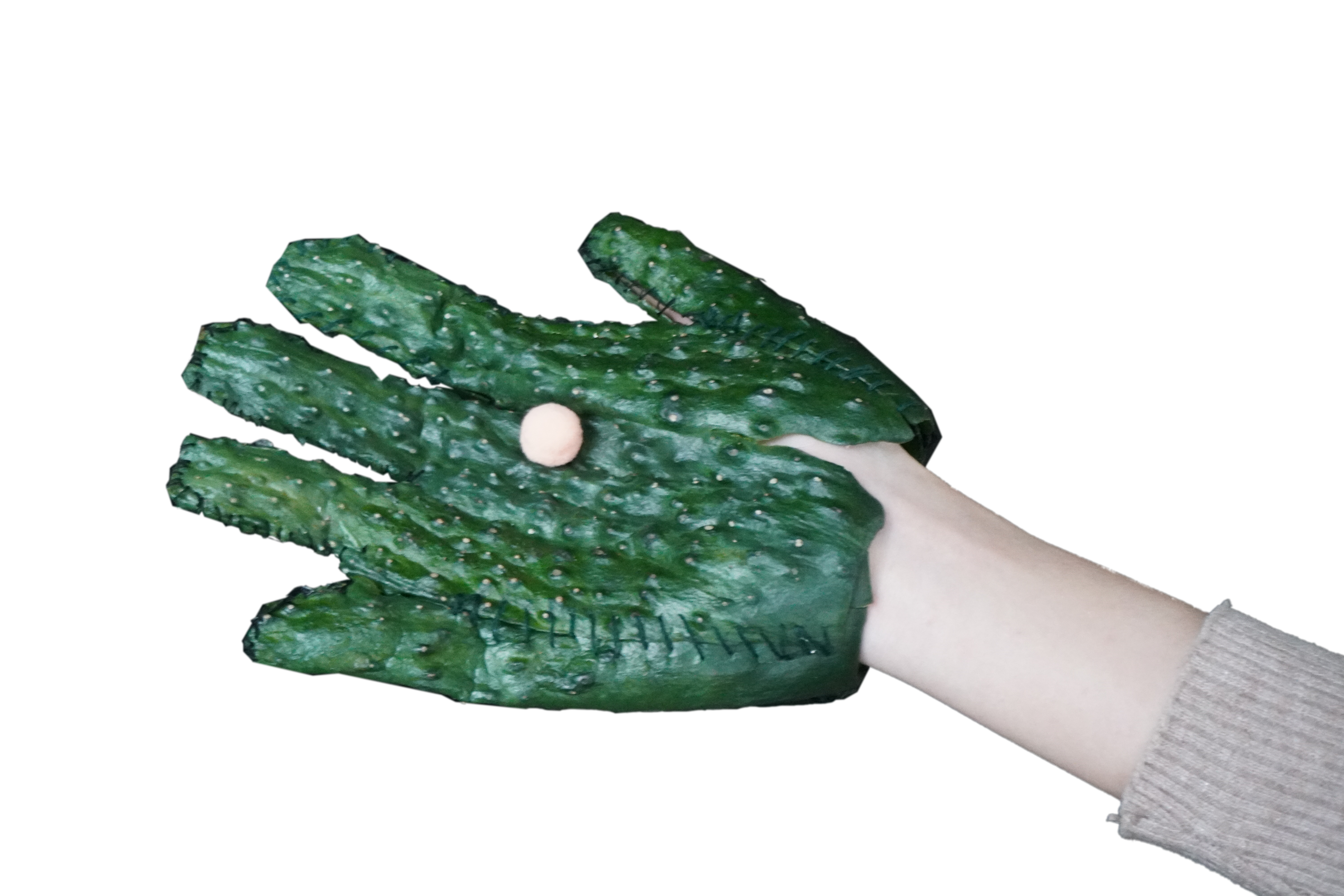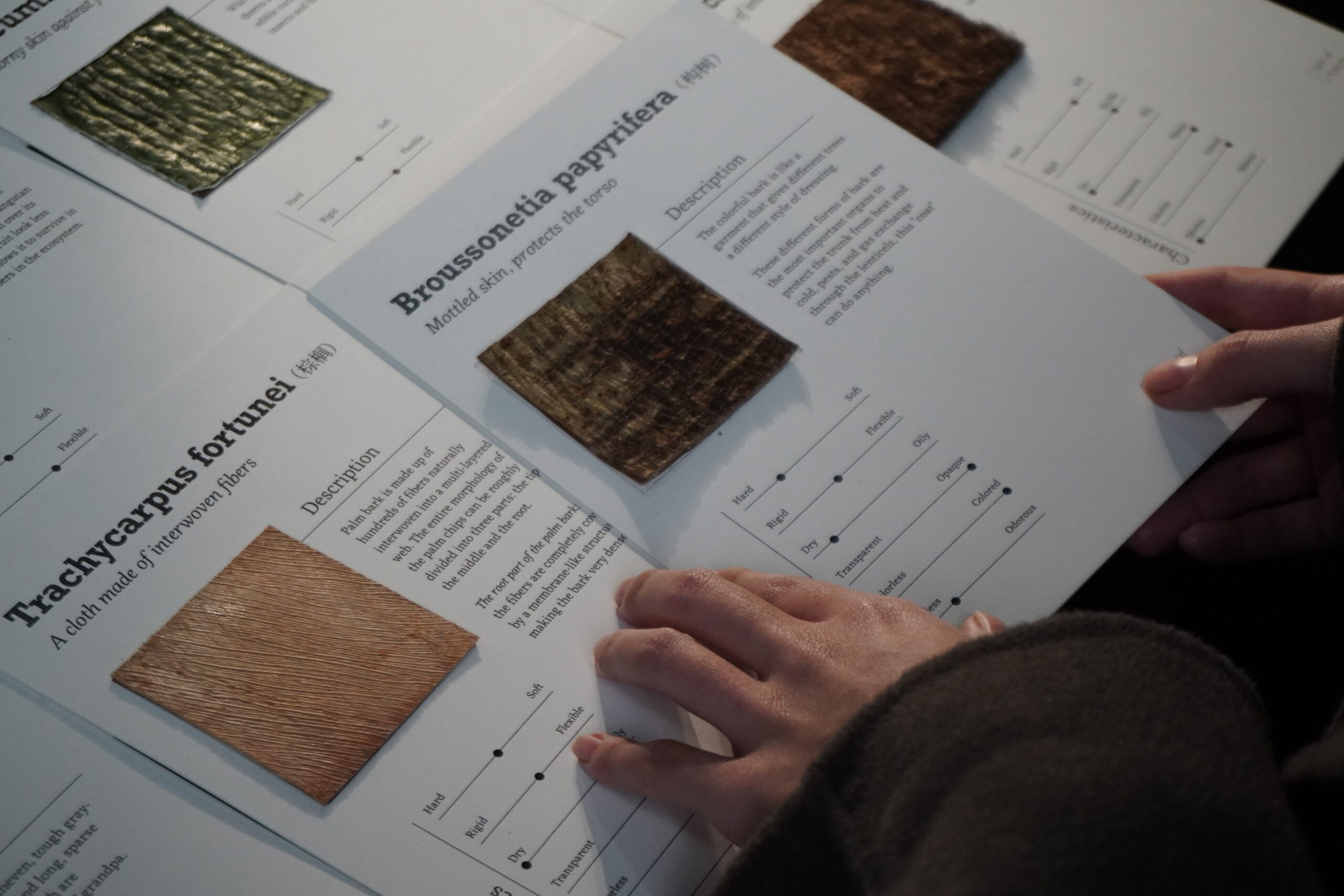Skin of Nature
We are working with nature, using the self-protection mechanism of biological epidermis to fabricate future wearable materials, thus reducing the use of animal leather.
2022/9-11 Teamwork
My role : Concept development, fabrication, Video making, exhibition design

The skin is the first barrier of life for the human body as well as other living creatures to protect them from attacks from the outside world. In winter, people use mink coats or rabbit fur hats to keep warm. For this reason a large number of animals lose their skins and are even slaughtered.
Pineapple
Midsection allow for flipper gloves that enhance swimming speed in the water.
On the other hand, people consume the bodies and fruits of plants, and their outer skins become part of the landfill. In fact, the outer skin of plants, which is usually discarded, also has properties that cannot be ignored. Therefore, we tried to use it as a surface material for wearable products, using the material itself to achieve a self-protective effect. We use plant-based glues and environmentally friendly preservatives to treat plant materials to resist decay, thus preserving their original form and properties.
Palm bark
Protects the cheekbones by keeping them moist and breathable through small holes on the inside.



We started our experiments with palm, pineapple, cucumber, and structural bark. The naturally hydrophobic fibers of the palm bark’s midsection allow for flipper gloves that enhance swimming speed in the water; thick pineapple bark makes facial jewelry that protects the cheekbones while keeping them moist and breathable through small holes on the inside; and the spines on the cucumber’s skin keep insects and bacteria at bay…
Structural Bark
Protect the fingers from heat and cold, pests, and exchange gas through the lenticels.
Skin of Nature has led to a rethinking of the relationship between humans and nature. Instead of through industrial manufacturing, people are learning from nature by recycling and planting to create wearable products.
Cucumber
The spines on the cucumber’s skin keep insects and bacteria at bay.


In the future, the by-products of planting can be further processed while retaining their epidermal biological characteristics to become biological materials as a second skin for humans, reducing the use of animal leather and thus reducing environmental pollution and harm to animals.
Exhibition

2022.11
Fablab,D&I,
281 FuXin Rd,SHANGHAI


